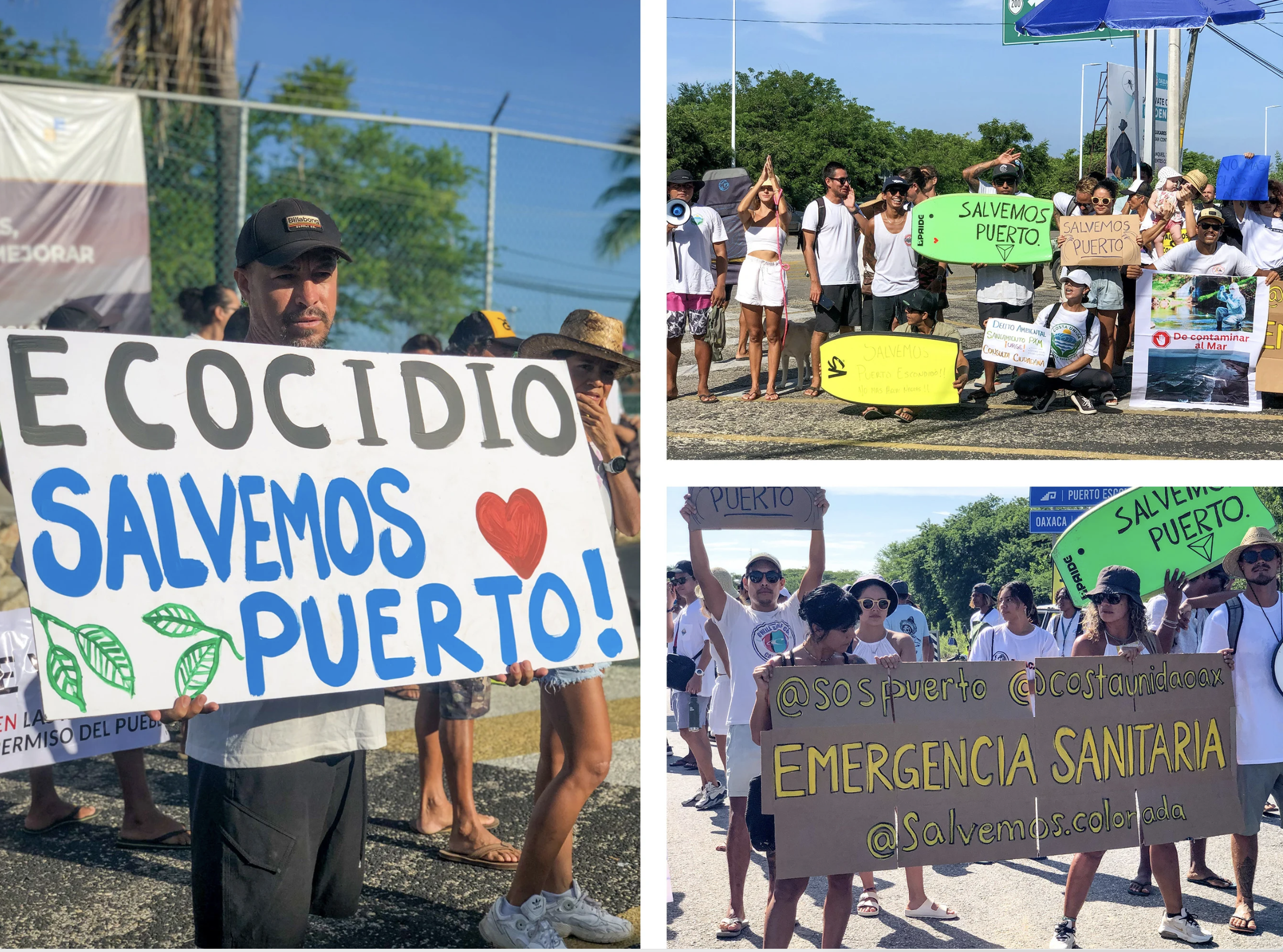On the Power of Grassroots Activism with PuertoSOS in Oaxaca, Mexico
PuertoSOS is a grassroots collective based in Puerto Escondido, Mexico, dedicated to protecting the environment and fostering sustainable development in the region. They focus on raising awareness about the ecological and social challenges brought by rapid urbanisation and an influx of tourism. In this conversation, members of PuertoSOS share their journey, challenges, and vision for Puerto Escondido’s future, including the future of the famous Mexican Pipeline surf break.
I spoke with two activists from PuertoSOS while travelling Mexico in early 2023, after coming across their story in a local zine which was published for free and distributed in cafes and clothing stores.
PuertoSOS’s story is one of resilience, community, and a relentless fight for Puerto Escondido’s future. They are a testament to the power of grassroots action and the enduring strength of Oaxaca’s communal spirit.
Bohie: How would you describe PuertoSOS?
PuertoSOS: It started as a movement, and now it’s evolving into more of a media platform. Our goal is to make environmental and social issues visible and give people the words and tools to understand the exploitation happening around them. Many don’t even realise what’s going on.
We started with murals. We thought it was the best way to communicate with people. We painted a mural on the stairs at Carrizalillo. It was designed like a comic strip—each step told a story about the environment, showing the transition from natural beauty to pollution and construction taking over.
Bohie: What issues do you focus on?
PuertoSOS: Migration is a big one. During the pandemic, many people moved here to work remotely, drawn by the beauty of Puerto Escondido. This influx overwhelmed our infrastructure—electricity, water, internet, and waste management—and drove up real estate prices. Local communities, already hit hard by the pandemic, started selling their communal lands to make ends meet. This has led to legal complications and loss of ancestral lands.
Bohie: Can you tell me about your efforts against overdevelopment?
PuertoSOS: PuertoSOS began when we heard about plans for a 12-storey building at Playa Bacocho, near a turtle rescue area and one of Puerto’s last jungles. The developers received permits without presenting proper environmental impact studies, which is sadly common due to corruption. We exposed this and mobilised protests.
Bohie: What happened during the protests?
PuertoSOS: We blocked roads and prevented trucks from taking sand for construction. It was hard; we didn’t know what to expect. But the community showed up—50 people stayed overnight, and others came and went. Locals brought us food and water, even if they didn’t join the protests. The pressure worked. The government paused the project to review the permits. The developers lost 300 million pesos, but they’re still trying to push forward.
Bohie: How would this development affect the environment?
PuertoSOS: The damage would be irreversible. The lights alone disrupt turtle navigation, and the jungle—home to species found only in Oaxaca—would be destroyed. Even the waves could be affected. There are examples from places like Mundaka in Spain, where government projects ruined surf waves, leading to massive tourism losses.
Bohie: How does the community respond to these challenges?
PuertoSOS: Oaxaca’s communal culture is our strength. We have a tradition called tequio, where people come together to work on projects for the community, like cleaning beaches or painting churches. This unity is what keeps us hopeful. We’re also trying to bridge the gap between locals and foreign residents by encouraging them to participate in these efforts.
Bohie: What challenges do you face in connecting with tourists and investors?
PuertoSOS: Most investors don’t care about the local culture or environment. They see Puerto as a profitable location and build without understanding the impact. Tourists, on the other hand, come and go without forming a connection. We’re exploring ways to reach them through media and storytelling.
Bohie: Surfing seems to connect people here. Has it helped your cause?
PuertoSOS: Definitely. Surfing brings together people from all backgrounds. It’s a huge part of Puerto’s identity and a common ground for conversations about conservation. The government is just starting to realise its importance.
Bohie: What’s your vision for Puerto in the next few years?
PuertoSOS: We hope for a more conscious and connected community. We’re optimistic because Oaxaca’s culture is so community-driven, but we’re aware that change requires constant effort. Sometimes our plans succeed; other times, they don’t. But we keep trying.




